Prestigious PhDs in collaboration with the ILL: Meet the Awardees!
Education, Research
On April 3, 2025
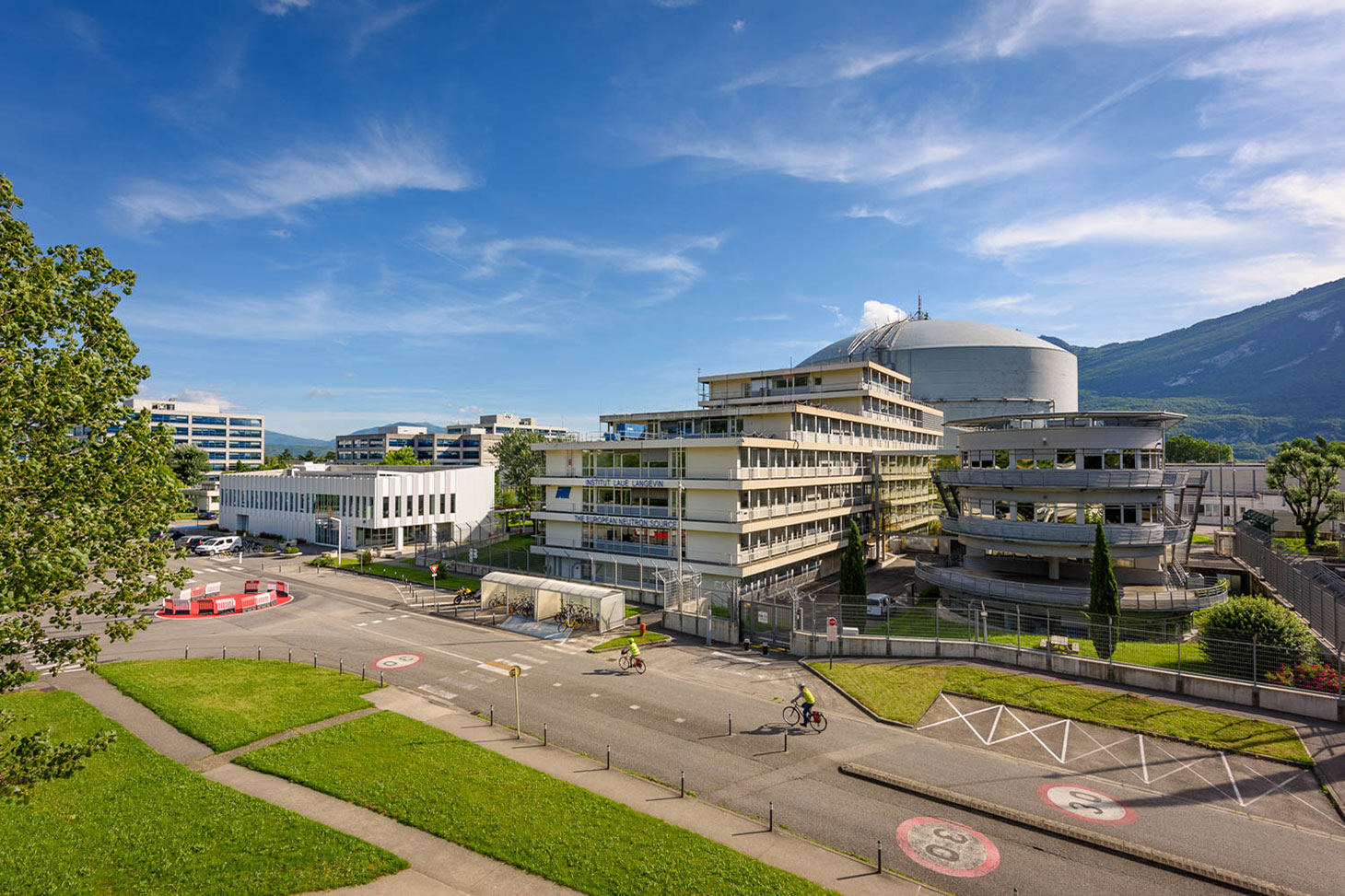
Université Grenoble Alpes (UGA), a longstanding partner of major research infrastructures in its region, is strengthening its scientific collaborations through the GATES project (Grenoble ATtractiveness and ExcellenceS). This ambitious program aims to develop high-level research projects and enhance Grenoble’s appeal as a world-class scientific hub. As part of this initiative, UGA plans to implement over 24 co-supervised PhD theses with the ILL (Institut Laue-Langevin) by 2032. Four doctoral contracts have already been launched following two IRGA (Initiatives de Recherche à Grenoble Alpes) calls for projects. Discover the portraits of the laureates!
A springboard for research and innovation
The co-supervised theses under the GATES program offer doctoral students unique opportunities: dual scientific supervision, access to state-of-the-art infrastructure, and high international visibility. This program boosts UGA’s scientific excellence and strengthens its position within major global research networks.Doctoral Awardee Profiles
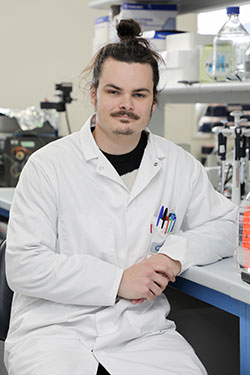 Théodore Arnaud is a PhD student at Université Grenoble Alpes in Doctoral School of Chemistry and Life Sciences. His thesis, co-supervised with the ILL at the Centre de recherche sur les macromolécules (CERMAV – CNRS / UGA), focuses on using neutron diffraction to decode the interaction of pathogens with human glycolipids.
Théodore Arnaud is a PhD student at Université Grenoble Alpes in Doctoral School of Chemistry and Life Sciences. His thesis, co-supervised with the ILL at the Centre de recherche sur les macromolécules (CERMAV – CNRS / UGA), focuses on using neutron diffraction to decode the interaction of pathogens with human glycolipids.A graduate of ENS Paris-Saclay in biology, with a dual master’s in Biology and Health, he developed a passion for microbiology and biochemistry through various internships. These experiences confirmed his desire to pursue a thesis at the interface of structural biology, biochemistry, and microbiology.
Many pathogens recognize sugar molecules in the first stage of infection, for example through virulence factors or toxins targeting glycolipids on host cells. A detailed structural understanding of this interaction could serve as a basis for developing new inhibitors as alternative strategies to antibiotics. His research, which began in October 2023, aims to analyze the interaction between bacterial proteins and human sugars using neutron crystallography. This technique provides unique details about hydrogen bonding and the protonation states of molecules. The project involves the production and purification of deuterated recombinant proteins and sugars using synthetic biology. Suitable crystals have been obtained, and structures are being determined using the ILL’s LADI and DALI instruments.
He is co-supervised by Anne Imberty (CERMAV) and Matthew Blakeley (ILL, LADI/DALI).
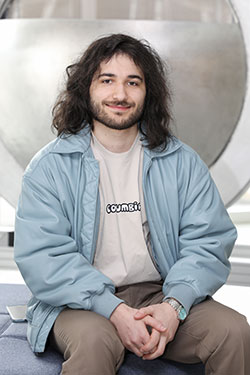 Renaud Serra is a PhD student at Université Grenoble Alpes in Physics Doctoral School. His thesis, co-supervised with the ILL at the Laboratory of Subatomic Physics and Cosmology (LPSC – CNRS / UGA / Grenoble INP – UGA), focuses on measuring the weak mixing angle through coherent elastic neutrino-nucleus scattering in the Ricochet experiment.
Renaud Serra is a PhD student at Université Grenoble Alpes in Physics Doctoral School. His thesis, co-supervised with the ILL at the Laboratory of Subatomic Physics and Cosmology (LPSC – CNRS / UGA / Grenoble INP – UGA), focuses on measuring the weak mixing angle through coherent elastic neutrino-nucleus scattering in the Ricochet experiment.He completed his entire academic journey at UGA, with a Bachelor's in Physics (L1 PCMM, L2 PM, L3 Physics at DLST and UFR PhITEM), followed by a Master’s in Fundamental Research (M1 RF and M2 in Subatomic Physics and Cosmology at LPSC). He also earned two university diplomas: the “Research Passport” during L1 and L2, and the “Magistère de Physique” from L3 to M2. He completed three research internships, including studies on the Talbot effect, galaxy clusters modeling, and cosmological survey accuracy with the Euclid mission.
The RICOCHET project aims to measure coherent elastic neutrino-nucleus scattering (CENNS), a process predicted in 1974 and only observed for the first time in 2017 by the COHERENT collaboration. In Ricochet, the neutrinos will come from the ILL’s research reactor in Grenoble and have lower energy, maximizing coherence effects. A precise CENNS cross-section measurement will test various particle physics models and determine the Weinberg angle (weak mixing angle) at low energy—currently based on just one experimental measurement. Since October 2023, his work has focused on determining the gamma background in the Ricochet environment using Monte Carlo simulations.
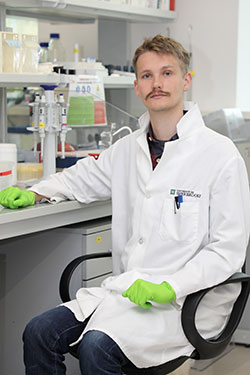 Finn Sombrutzki is a PhD student at Université Grenoble Alpes in the Doctoral School of Chemistry and Life Sciences. His thesis, co-supervised with the ILL and conducted at Institut de biologie structurale (IBS - CEA / CNRS / UGA), is titled: Toward Amyloid Formation: Protein and Hydration Water Dynamics in Liquid-Liquid Phase Separation (LLPS).
Finn Sombrutzki is a PhD student at Université Grenoble Alpes in the Doctoral School of Chemistry and Life Sciences. His thesis, co-supervised with the ILL and conducted at Institut de biologie structurale (IBS - CEA / CNRS / UGA), is titled: Toward Amyloid Formation: Protein and Hydration Water Dynamics in Liquid-Liquid Phase Separation (LLPS).After completing a biotechnology training program (BTA Ausbildung) in Neumuenster, Germany, and a civic service in Grenoble, he earned a Bachelor's in Chemistry in Freiburg im Breisgau and a Master’s in Structural Biology in Grenoble.
Homogeneous protein solutions can spontaneously separate via LLPS. The dense phase becomes highly enriched in proteins, while the dilute phase is depleted. Often, intrinsically disordered proteins are involved in LLPS. His thesis, which began in November 2023, investigates changes in protein dynamics at nanosecond timescales and Ångström-length scales during LLPS. His work focuses on tau protein, found in neurons, with insoluble tau fibrils being a hallmark of Alzheimer’s disease. He uses neutrons from the ILL’s high-flux reactor to study energy exchange with proteins, deducing hydrogen atom diffusion. Measurements will be carried out on the IN16B backscattering spectrometer during the second reactor cycle of the year.
He is supervised by Yann Fichou (European Institute of Chemistry and Biology), Giorgio Schiro, Tilo Seydel, and Martin Weik (IBS).
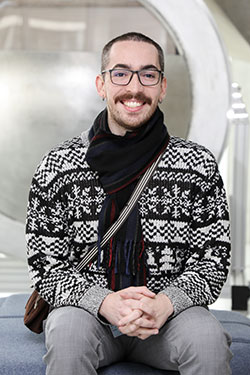 Aelton Baptista Santos is a PhD student at Université Grenoble Alpes in the Doctoral SchoolEngineering - Materials, mechanics, environment, energy, processes, production. His thesis, co-supervised with the ILL at the SIMaP Laboratory Science and Engineering of Materials and Processes (SIMaP – CNRS / Grenoble INP – UGA / UGA), is titled: New Non-Cryogenic H₂ Storage and Gas Release via Spin Transition in Metal-Organic Frameworks with Open Metal Sites.
Aelton Baptista Santos is a PhD student at Université Grenoble Alpes in the Doctoral SchoolEngineering - Materials, mechanics, environment, energy, processes, production. His thesis, co-supervised with the ILL at the SIMaP Laboratory Science and Engineering of Materials and Processes (SIMaP – CNRS / Grenoble INP – UGA / UGA), is titled: New Non-Cryogenic H₂ Storage and Gas Release via Spin Transition in Metal-Organic Frameworks with Open Metal Sites.He holds a Master's in Physics from the Federal University of Paraná (2024), where he focused on molecular dynamics and Monte Carlo simulations for pollutant adsorption. He participated in several research programs, including a three-month internship at SIMaP in 2024 through the CAPES-PRINT program. His work includes carbon-based porous materials for CO₂ capture and published research on nanomaterials.
Starting in December 2024, his research aims to develop a new method for non-cryogenic hydrogen storage using spin transition-assisted gas release in MOFs. The goal is to demonstrate a new process for H₂ adsorption and release by leveraging Kubas interactions and spin transition mechanisms for efficient storage and controlled release. The project combines computational approaches (density functional theory) and experimental techniques (neutron diffraction, inelastic neutron scattering), conducted at SIMaP and ILL. This research is part of the UGA-Large Instrument initiative and benefits from neutron experiments at large-scale facilities.
He is supervised by Roberta Poloni (CNRS, SIMaP) and Jose Alberto Rodriguez Velamazan (ILL).
The Institut Laue-Langevin (ILL)
The ILL is the world’s leading facility for neutron science and technology. With the most intense neutron beams worldwide and a suite of 43 advanced neutron instruments, the ILL offers a unique tool for probing the structure and dynamics of materials. Each year, over 1,400 researchers - mostly from its 13 member countries but also from 50 others - are selected by expert committees to carry out over 1,000 cutting-edge experiments. These support advances in fields such as physics, chemistry, biology, health sciences, materials science, and nuclear and particle physics. The ILL plays a central role in scientific research, innovation, and education and is a cornerstone of Grenoble’s scientific and innovation ecosystem and the broader European neutron research landscape.
The ILL is the world’s leading facility for neutron science and technology. With the most intense neutron beams worldwide and a suite of 43 advanced neutron instruments, the ILL offers a unique tool for probing the structure and dynamics of materials. Each year, over 1,400 researchers - mostly from its 13 member countries but also from 50 others - are selected by expert committees to carry out over 1,000 cutting-edge experiments. These support advances in fields such as physics, chemistry, biology, health sciences, materials science, and nuclear and particle physics. The ILL plays a central role in scientific research, innovation, and education and is a cornerstone of Grenoble’s scientific and innovation ecosystem and the broader European neutron research landscape.
Published on April 14, 2025
Updated on April 18, 2025
Updated on April 18, 2025
Learn more
The GATES project strengthens collaboration with the ILL. UGA and ILL already maintain strong ties through research partnerships and training programs. This cooperation fosters research and innovation, particularly in the fields of materials science, structural biology, chemistry, and nuclear and particle physics.
As part of the GATES project, an annual call for co-supervised PhD theses is launched. Formerly known as IRGA, the call is now titled GATES@UGA PhD and is announced and shared with laboratories in the fall. It allows research pairs (UGA–Large Instrument) to submit an application consisting of a research project. The selection results are published in the spring, with the PhD work beginning in the last quarter of the year.
As part of the GATES project, an annual call for co-supervised PhD theses is launched. Formerly known as IRGA, the call is now titled GATES@UGA PhD and is announced and shared with laboratories in the fall. It allows research pairs (UGA–Large Instrument) to submit an application consisting of a research project. The selection results are published in the spring, with the PhD work beginning in the last quarter of the year.

This project is supported by funding from the French government, managed by the National Research Agency under the Investments for the Future program, reference number ANR-22-EXES-0001.

